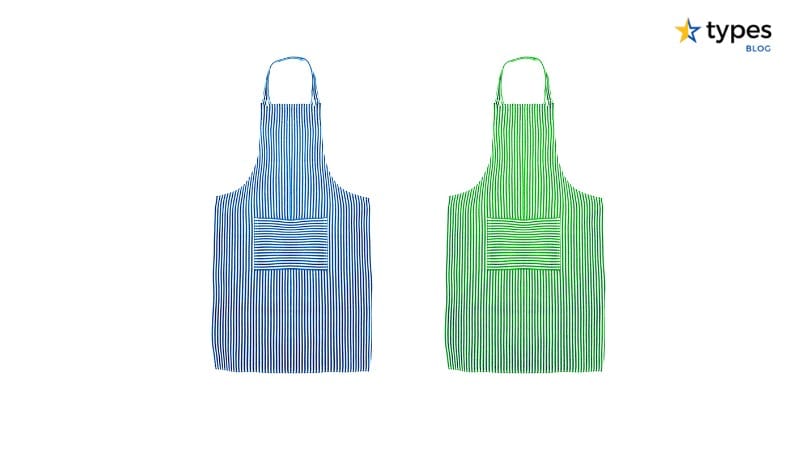Introduction
Types of Aprons and their significance
Aprons serve a practical purpose in the kitchen, providing protection for chefs and kitchen staff from spills, backsplash, and stains. There are different types of aprons designed for specific purposes, such as chef aprons and bib aprons.
Chef Aprons: Chef aprons are specifically designed for kitchen duties and working with food. These aprons, also known as cooking aprons, are designed to keep the wearer’s clothes clean while cooking. They offer protection against spills, burns, and splashes. Chef aprons often come in traditional black-and-white designs, adding a touch of professionalism to the kitchen attire.
Bib Aprons: Bib aprons are a more general type of apron that provides full-body coverage. They are commonly worn by kitchen staff and chefs who require maximum protection from stains and spills. Bib aprons typically have a neck strap and waist ties, allowing for easy adjustment and a secure fit. The bib portion of the apron covers the chest and stomach area, providing extra protection for the upper body.
These different types of aprons ensure that kitchen staff and chefs have the necessary protection and functionality while working in a busy kitchen environment.
History of Aprons in fashion and workplace uniforms
Aprons have been a part of fashion and workplace uniforms since the 17th century. Initially, aprons were worn by women for domestic chores, such as cooking, cleaning, and gardening. They were made from simple fabrics and served as a practical garment to protect clothing from stains and dirt.
Over time, aprons evolved into more elaborate designs, with decorative elements and embellishments. They became a symbol of social status and fashion, with different apron styles worn for different occasions. In the workplace, aprons were commonly worn by servants, nurses, and other laborers to signify their role and protect their clothing from wear and tear.
In modern times, aprons have become a staple in professional kitchens and food service establishments. Chefs and kitchen staff wear aprons as part of their uniform for hygiene and safety reasons. Aprons not only provide protection but also contribute to the overall presentation and professionalism of the kitchen staff.
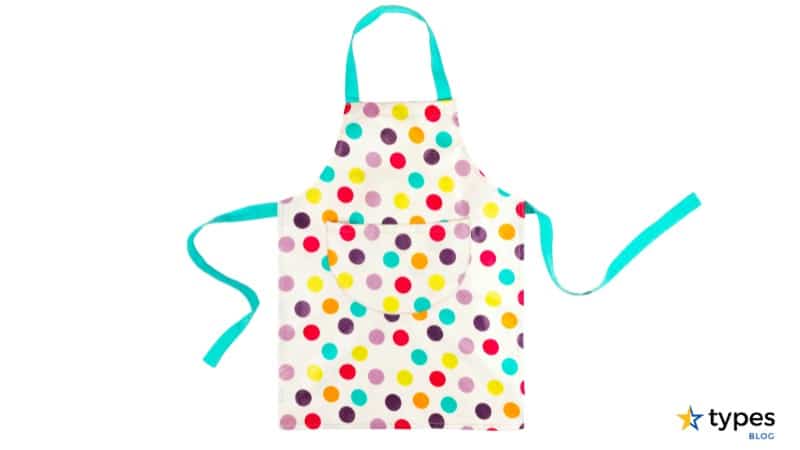
In conclusion, aprons are an essential garment in the kitchen, providing protection and functionality for chefs and kitchen staff. Different types of aprons, such as chef aprons and bib aprons, cater to specific needs and ensure the wearer’s clothes stay clean and safe. Aprons have a rich history in fashion and workplace uniforms, evolving from simple practical garments to fashionable and functional accessories in the kitchen.
Server Apron or Waist Apron
Features and uses of Server Apron
Server aprons, also known as waist aprons, are specifically designed for professionals working in the service industry, such as servers, waiters, waitresses, and bussers. These aprons serve multiple purposes and are essential for individuals who need to be quick on their feet and constantly on the move. Here are some key features and uses of server aprons:
1. Low-cut and short length: Server aprons are typically low-cut and end right above the knees or mid-thigh. This shorter length allows for easy movement and freedom of walking, enabling the wearer to navigate through crowded spaces and busy restaurant floors with ease.
2. Waist tie: Server aprons are tied around the waist, providing a secure fit and ensuring that the apron stays in place even during fast-paced activities. The waist tie can be adjusted for comfort, accommodating different body types.
3. Pockets for convenience: Most server aprons come with pockets, adding a layer of functionality. These pockets provide a convenient place for servers to store essential items such as guest checks, pens, straws, or other small tools needed for their tasks. The pockets allow for easy access, minimizing the time spent searching for necessary items while serving customers.
4. Protecting clothing: While server aprons primarily serve a functional purpose, they also offer protection for the wearer’s clothing. As servers often work in a fast-paced and sometimes messy environment, aprons act as a barrier, preventing spills, stains, and splatters from reaching the wearer’s clothes.
Materials and styles of Server Apron
Server aprons come in a variety of materials and styles to cater to different preferences and needs. Here are a few common materials and styles you can find:
1. Cotton: Cotton is a popular material choice for server aprons due to its comfort, breathability, and easy maintenance. Cotton aprons are lightweight and absorbent, making them suitable for long hours of use.
2. Polyester: Polyester is another common material used for server aprons. It is known for its durability, resistance to wrinkles, and colorfastness. Aprons made of polyester are often more resistant to stains and spills compared to cotton.
3. Denim: Denim aprons offer a more rugged and fashionable look. Denim is a durable and thick fabric that can withstand heavy use and frequent washing. These aprons are popular in trendy or casual dining establishments.
4. Adjustable straps: Some server aprons come with adjustable straps that go over the shoulders in addition to the waist tie. This style provides extra support, distributes the weight of the apron more evenly, and offers a more secure fit.
In conclusion, server aprons, or waist aprons, are essential accessories for professionals in the service industry. They offer functionality, convenience, and protection, allowing servers and waitstaff to perform their duties efficiently and comfortably. Available in various materials and styles, there is a server apron suitable for every individual’s needs and preferences.
Bib Apron or Chef Apron
Characteristics and purpose of Bib Apron
Bib aprons, also known as chef aprons, are specifically designed for kitchen staff and chefs who require full body protection from spills, backsplash, and stains. These aprons offer superior coverage, extending from the neckline to the knees or lower, providing comprehensive protection to both the front and back of the wearer. Here are some key characteristics and purposes of bib aprons:
1. Full coverage: Bib aprons provide full coverage of the upper body, protecting the chef’s uniform or clothing from spills, splashes, and food particles. The neckline is typically high to prevent any spills or splashes from reaching the chest area.
2. Cross-back or adjustable neck strap: Bib aprons usually feature a cross-back or adjustable neck strap, ensuring a secure and comfortable fit for individuals of different heights and body types. This design minimizes strain on the neck and shoulders, enabling chefs to work for long hours without discomfort.
3. Waist tie or adjustable waist strap: Bib aprons are tied around the waist to keep the apron securely in place. Some aprons may also have an adjustable waist strap for a more customized fit. This feature allows for easy movement and flexibility while working in the kitchen.
4. Heavy-duty and durable materials: Bib aprons are commonly made of heavy-duty fabrics such as cotton twill or polyester blends, ensuring durability and longevity even in rigorous kitchen environments. These materials are resistant to stains and can withstand frequent washing.
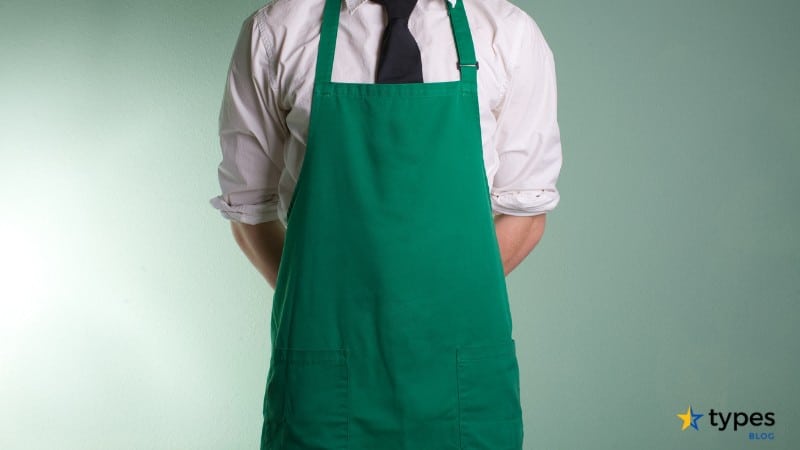
Varieties of Bib Aprons and their materials
Bib aprons come in various styles and materials to meet different preferences and requirements. Here are a few common types of bib aprons:
1. Traditional black-and-white design: This classic design features a solid black or white base with contrasting stripes or checks. It is often associated with professional chefs and is widely used in commercial kitchens.
2. Colorful and patterned aprons: For a more vibrant and personalized look, there are bib aprons available in a wide range of colors and patterns. These aprons can add a touch of style and personality to the chef’s uniform while still providing the necessary protection.
3. Waterproof or stain-resistant aprons: Some bib aprons are specially treated or made from waterproof or stain-resistant materials. These aprons are ideal for chefs working with liquids, oils, or other substances that may cause stains.
4. Lightweight and breathable aprons: Chefs who work in hot and humid kitchens may opt for lightweight and breathable bib aprons. These aprons are usually made from breathable fabrics such as cotton or linen, allowing air circulation and preventing excessive heat buildup.
In summary, bib aprons, also known as chef aprons, are essential for kitchen staff and chefs who require maximum protection and coverage while working. They offer full body coverage, adjustable straps for a comfortable fit, and durable materials that withstand rigorous use. With a variety of styles and materials to choose from, chefs can find the perfect bib apron that suits their needs and preferences.
Cobbler Apron
Function and design of Cobbler Apron
The cobbler apron is a type of apron that provides full coverage and protection for various activities such as working in hospitals, pursuing hobbies, or engaging in arts and crafts. It is designed to offer both back and front coverage, ensuring that your entire body is protected from splashes, stains, and other potential hazards. Unlike other aprons that have a neck loop, the cobbler apron features a slip-on design that eliminates the need for tying or adjusting a neck strap. Instead, it has snap fronts that allow for a perfect fit and easy removal.
Cobbler aprons are especially favored by cobblers or those working with sharp objects, heat, and stains due to their robust and durable nature. Many cobblers choose aprons made from leather as it offers optimal protection against these hazards. Leather aprons are known for their ability to withstand sharp objects, high temperatures, and repel stains, making them an ideal choice for this profession.
Popular materials and styles of Cobbler Aprons
Cobbler aprons are available in various materials and styles to accommodate different preferences and needs. Here are some popular options:
1. Leather: Leather cobbler aprons are highly sought after for their durability and level of protection. They are particularly suitable for professionals who work with sharp objects and require heat resistance. Leather aprons are known for their ability to withstand wear and tear, making them a long-lasting investment.
2. Cotton: Cotton cobbler aprons are a more lightweight and breathable option. They offer comfort and ease of movement, making them suitable for long hours of wear. Additionally, cotton aprons are easy to clean and maintain.
3. Polyester: Polyester cobbler aprons are known for their durability and resistance to wrinkles. They are often more resistant to stains and spills compared to cotton. Polyester aprons are a practical choice for individuals who want an apron that can withstand frequent washing and heavy use.
4. Denim: Denim cobbler aprons offer a stylish and rugged look. They are made of a thick and durable fabric that can handle heavy-duty tasks. Denim aprons are commonly found in trendy or casual dining establishments.
In summary, cobbler aprons provide valuable protection for various activities, including working in hospitals, pursuing hobbies, or doing arts and crafts. They are designed for full coverage and have a slip-on design with snap fronts for convenience. Cobbler aprons are commonly made from leather, providing the necessary protection against sharp objects, heat, and stains. However, they are also available in other materials such as cotton, polyester, and denim to cater to different preferences and needs.
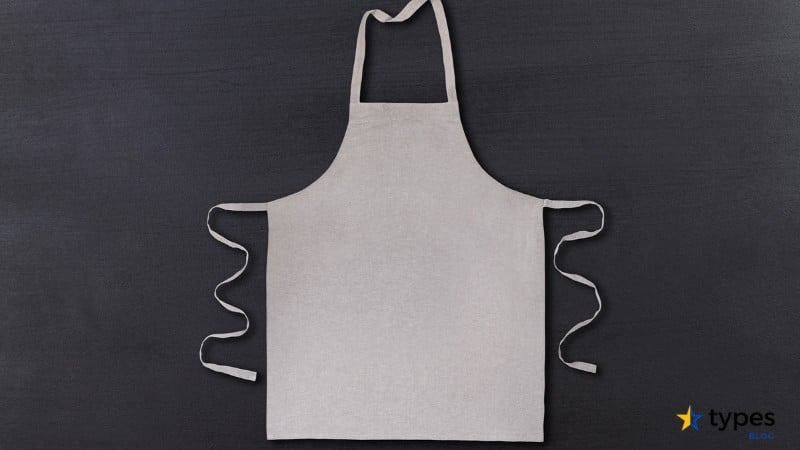
Cross-back Apron
Benefits and versatility of Cross-back Aprons
Cross-back aprons, also known as pinafore aprons, are a popular choice for those looking for comfortable and cute aprons for home use. Unlike traditional aprons that have a neck loop or tie around the waist, cross-back aprons feature shoulder straps that crisscross at the back, providing a secure and adjustable fit. Here are some benefits and uses of cross-back aprons:
1. Comfort: The cross-back design eliminates the need for tying around the waist, making it a more comfortable option for extended wear. The shoulder straps evenly distribute the weight of the apron, reducing strain on the neck and shoulders.
2. Full coverage: Cross-back aprons typically offer coverage up to the knees, providing protection from stains, spills, and splashes. This makes them ideal for messy tasks such as cooking, baking, gardening, or crafting.
3. Ease of movement: The crisscross shoulder straps allow for a wide range of motion, allowing you to move freely without any restrictions. This makes cross-back aprons suitable for activities that require bending, stretching, or reaching.
4. Versatility: Cross-back aprons are not only practical for home use but also popular in upscale restaurants. They are often worn by servers for a polished and professional look. The adjustable straps ensure a perfect fit for individuals of different body shapes and sizes.
Different Cross-back Apron styles and fabrics
Cross-back aprons come in various styles and fabrics to cater to different preferences and needs. Here are some popular options:
1. Cotton: Cotton cross-back aprons are a classic choice. They are lightweight, breathable, and easy to care for. Cotton aprons come in a wide range of colors and patterns, allowing you to express your personal style.
2. Denim: Denim cross-back aprons offer a stylish and durable option. The thick and rugged fabric can withstand heavy-duty tasks and is commonly found in trendy or casual dining establishments.
3. Linen blends: Linen blend cross-back aprons combine the comfort of cotton with the natural texture of linen. They are lightweight, breathable, and exhibit a relaxed and effortless aesthetic.
4. Customizable: Some cross-back aprons can be personalized or customized with embroidery, names, or logos, making them a popular choice for businesses or as gifts.
In conclusion, cross-back aprons provide a comfortable and stylish alternative to traditional aprons. Their versatile design and adjustable straps offer a perfect fit for various body types, making them suitable for home use or as professional server aprons. Whether you prefer cotton, denim, or linen blends, there is a cross-back apron to suit your needs and style.
Pinafore Apron
Introduction to Pinafore Apron
The pinafore apron, also known as a cross-back apron, is a popular choice for home use. It is loved for its comfortable and cute design, making it a perfect option for everyday tasks. Pinafore aprons are typically made from cozy materials like cotton, denim, and linen blends, ensuring both style and comfort while wearing them.
Traditional and modern variations of Pinafore Aprons
Pinafore aprons have evolved over time, with both traditional and modern variations available in the market. Here are some notable types:
1. Classic Pinafore: This type of pinafore apron features a timeless design with a cross-back style. It provides full coverage and allows freedom of movement, making it suitable for various household chores such as cooking, cleaning, and gardening. Classic pinafore aprons are often made from durable materials and come in a range of colors and patterns.
2. Contemporary Pinafore: Modern pinafore aprons are designed to cater to the changing fashion trends and preferences. They may feature unique prints, asymmetrical cuts, or added details like pockets or ruffles. These stylish variations retain the comfort of a pinafore apron while adding a touch of modern flair.
3. Linen Pinafore: Linen pinafore aprons are known for their breathability and natural texture. They are perfect for warm climates or for those who prefer lightweight aprons. Linen fabric is highly absorbent and durable, making it an excellent choice for messy tasks.
4. Denim Pinafore: Denim pinafore aprons are a trendy choice for those who desire a casual and rugged look. They are made from thick and durable denim fabric, making them suitable for heavy-duty tasks. Denim pinafores are often seen in trendy or casual dining establishments, providing both style and functionality.
In summary, pinafore aprons are a beloved choice for home use due to their comfortable and cute design. They are typically made from cozy materials like cotton, denim, and linen blends. Traditional pinafore aprons offer full coverage and freedom of movement, while modern variations cater to changing fashion trends. Whether you opt for a classic, contemporary, linen, or denim pinafore, you can enjoy both style and functionality while completing your everyday tasks.
Butcher Apron
Introduction to Butcher Apron
The butcher apron, also known as a waist apron or cooking apron, is a versatile and functional apron commonly used in commercial kitchens, butcheries, and food preparation areas. It is specifically designed to provide maximum protection to the waist and lower body area while allowing ease of movement.
Features and uses of Butcher Apron
Butcher aprons are known for their durability and ability to withstand heavy use and frequent washing. They typically feature the following characteristics:
1. Length and coverage: Butcher aprons are shorter in length compared to bib aprons, ending at the waist or just above the knee. This design allows for better mobility and prevents the apron from getting in the way during food preparation tasks.
2. Waist ties: Unlike bib aprons that have straps that go over the shoulders, butcher aprons have waist ties that can be easily adjusted and secured at the back. This design offers a more comfortable and customizable fit for the wearer.
3. Pockets: Many butcher aprons are equipped with pockets conveniently placed at the front. These pockets provide storage for essential tools, such as thermometers, knives, and pens, allowing chefs and kitchen staff to have their tools within easy reach.
4. Stain and liquid resistance: Butcher aprons are typically made from heavy-duty materials that are resistant to stains and liquids. This feature ensures that spills and splashes encountered in busy kitchen environments do not penetrate the fabric, keeping the wearer’s clothing clean and protected.
Butcher aprons are commonly used in various professional kitchen settings, including restaurants, butcheries, catering companies, and food processing plants. They offer the following uses:
1. Protection: The primary purpose of a butcher apron is to provide protection to the wearer’s clothing from stains, spills, and splashes that are common in a fast-paced kitchen environment. These aprons help to keep the chef or kitchen staff’s uniform clean and presentable.
2. Hygiene: Butcher aprons play a crucial role in maintaining hygiene standards in commercial kitchens. They act as a barrier between the wearer’s clothing and the food being prepared, preventing any cross-contamination.
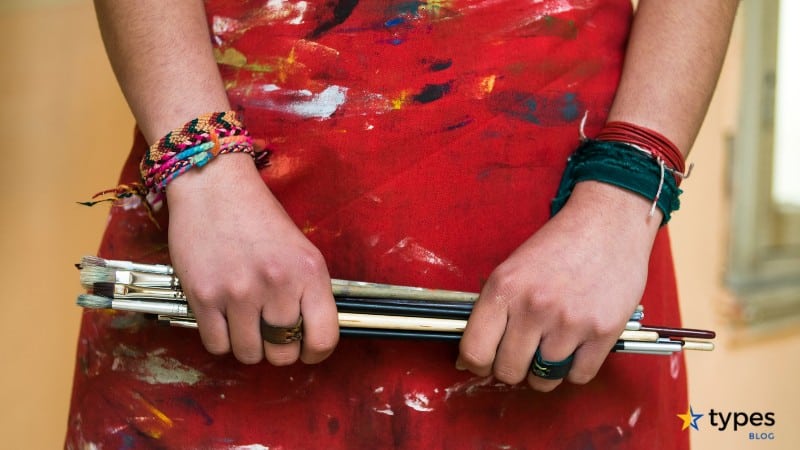
Butcher Apron materials and styles
Butcher aprons are available in a variety of materials and styles to cater to different preferences and requirements. Some common materials used for butcher aprons include:
1. Cotton: Cotton butcher aprons are lightweight, breathable, and easy to clean. They offer good stain resistance and are comfortable to wear for long hours in a hot kitchen environment.
2. Polyester: Polyester butcher aprons are known for their durability and resistance to wrinkles and shrinking. They are suitable for heavy-duty use and provide excellent stain resistance.
3. Blend: Blend butcher aprons combine the benefits of different materials, such as cotton and polyester. These aprons offer a balance between comfort, durability, and stain resistance.
In terms of styles, butcher aprons can vary in their design, color, and added features. Some aprons may have adjustable neck straps, while others may have accent details like contrasting trims or embroidered logos. The choice of style depends on personal preference and the specific needs of the kitchen or establishment.
In conclusion, the butcher apron is a versatile and functional apron designed for protection and convenience in commercial kitchens. It offers features such as length and coverage, waist ties, pockets, and stain resistance. Butcher aprons are commonly used in various professional kitchen settings to provide protection and maintain hygiene standards. They are available in different materials, including cotton, polyester, and blends, and come in various styles to suit individual preferences.
Waist Apron with Pockets
Advantages and purposes of Waist Apron with Pockets
A waist apron with pockets is a practical and functional choice for front-of-the-house servers, waiters, waitresses, and bussers. Its low-cut design and short length allow for easy movement and freedom while walking, making it convenient for those in the service industry. The apron ends right above the knees or mid-thigh and is tied around the waist, ensuring a secure fit throughout the shift.
The main advantage of a waist apron with pockets is the added convenience it offers. With two front pockets on either side, servers can easily store important items such as guest checks, pens, straws, and other small tools. This allows them to have quick access to essential items while attending to guests, saving time and increasing efficiency. The pockets also help to keep these items organized and readily available whenever needed.
In addition to the practicality it provides, the waist apron with pockets also acts as a protective barrier for the server’s clothing. It helps prevent staining and keeps the server’s clothes clean, especially when dealing with spills or messy tasks. The apron serves as a shield between the server and potential food or beverage splatters, ensuring a professional and tidy appearance throughout the shift.
Various designs and fabrics for Waist Apron with Pockets
Waist aprons with pockets come in various designs and fabrics, allowing servers to choose the style that best suits their needs and preferences. Here are some popular options:
1. Classic Style: The classic waist apron with pockets features a simple yet timeless design. It typically has a tie behind the neck and another tie around the waist for a secure fit. The classic style is often made of durable and easy-to-clean materials such as polyester or poly-cotton blends.
2. Stylish Additions: Some waist aprons with pockets may have additional design elements to enhance their appearance. Ruffles, patterns, or contrasting trimmings are common embellishments that add a touch of style to the apron while maintaining its functionality.
3. Various Pocket Configurations: While most waist aprons with pockets have two front pockets, there are designs that offer additional pocket configurations. Some aprons may have larger pockets for holding notepads or electronic devices, while others may have smaller pockets for storing specific items like pens or utensils.
4. Fabric Options: Waist aprons with pockets can be found in a range of fabric options. Sturdy materials such as canvas or denim provide durability for heavy-duty tasks, while lighter fabrics like cotton or polyester blends offer comfort and breathability.
In summary, waist aprons with pockets are ideal for front-of-the-house servers, waiters, waitresses, and bussers. They offer convenience and functionality with their two front pockets, allowing for easy access to essential items. These aprons also provide protection for the server’s clothing, ensuring a professional appearance. With various designs and fabrics available, servers can choose a waist apron with pockets that suits their style and needs.
Conclusion
Summary of different types of Aprons
Aprons have been used for centuries as both fashion statements and practical workplace uniforms. They serve the primary purpose of protecting the wearer’s clothing from stains and spills while working in the kitchen. In this article, we explored the different types of aprons available, focusing on the waist apron with pockets.
The waist apron with pockets is a popular choice for front-of-the-house servers, waiters, waitresses, and bussers. Its low-cut design and short length allow for easy movement and freedom while walking, making it convenient for those in the service industry. The apron ends right above the knees or mid-thigh and is tied around the waist, ensuring a secure fit throughout the shift.
One of the main advantages of the waist apron with pockets is the added convenience it offers. With two front pockets on either side, servers can easily store important items such as guest checks, pens, straws, and other small tools. This allows them to have quick access to essential items while attending to guests, saving time and increasing efficiency. The pockets also help to keep these items organized and readily available whenever needed.
Additionally, the waist apron with pockets acts as a protective barrier for the server’s clothing. It helps prevent staining and keeps the server’s clothes clean, especially when dealing with spills or messy tasks. The apron serves as a shield between the server and potential food or beverage splatters, ensuring a professional and tidy appearance throughout the shift.
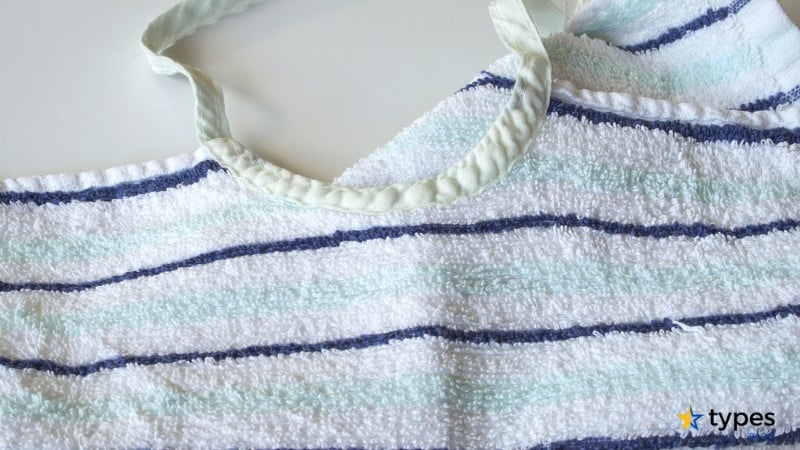
Choosing the right Apron for your needs
When selecting an apron, it is important to consider your specific needs and preferences. Here are some factors to consider:
1. Purpose: Determine the primary purpose of the apron. Are you using it for cooking at home, working in a restaurant, or attending a cooking course? This will help determine the necessary features and design.
2. Style: Choose a style that reflects your personal taste and aligns with the dress code or atmosphere of your workplace, if applicable. Some aprons have classic, timeless designs, while others may have stylish additions such as ruffles or patterns.
3. Material: Consider the fabric options available. Sturdy materials like canvas or denim are suitable for heavy-duty tasks, while lighter fabrics like cotton or polyester blends offer comfort and breathability.
4. Pocket Configuration: Determine the number and size of pockets you require. Some aprons have two front pockets, while others offer additional configurations to accommodate different tools and accessories.
By considering these factors, you can select the right apron that meets your needs and enhances your work experience.
In conclusion, aprons play an essential role in protecting the wearer’s clothing and maintaining a clean and professional appearance. The waist apron with pockets, in particular, offers convenience, functionality, and protection for front-of-the-house servers, waiters, waitresses, and bussers. By choosing the right apron for your needs, you can optimize your work efficiency and enhance your overall experience while wearing an apron.

